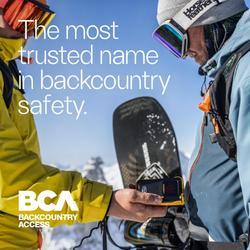Observation Date
12/16/2021
Observer Name
Noah Sievers
Region
Ogden » Ben Lomond » Cutler Ridge
Location Name or Route
Cutler Ridge Trail, Ben Lomond Peak area
Comments
Weather Observations:
At the start of the tour (9:35AM) at 5600ft, snow was falling at a rate of S-1 with OVC conditions and calm winds. At 9:55AM and 6000ft elevation, snowfall rates increased to S1 with snow grains consisting of graupel averaging 2-3mm in size. Ambient air temperature was 27F with small windows of clearing skies to the East. Ben Lomond peak and surrounding upslope terrain to the West was not visible and experiencing OVC conditions, likely due to enhanced orographic lifting at higher elevations. At 10:50AM and 6800ft elevation, snowfall rates fluctuated back down to S-1, still consisting of 2-3mm graupel snow grains. Skies continued to show signs of clearing to the East and South towards Eden, with stratocumulus clouds visible in cloud openings and low elevation (approx. 5000-6000ft) Valley Fog swiftly moving and dissipating through the lower valley. At 10:50AM and 6800ft; winds were calm, with occasional moderate gusts that produced snow transport onto E and NE aspects. After assessing snowpack conditions at 7100ft, and returning to 6000ft at 1:50PM; winds reached moderate speeds and snowfall rates quickly jumped to S2. During this period, precipitating snow grains had transitioned from graupel to heavily rimed dendrites, 1-2mm in size. Storm energy was increasing, and visibility was decreasing when I returned to my vehicle around 2:30PM. From 9:35AM to 2:30AM, approximately 10cm of mixed precipitation particles had fallen and accumulated at 5600ft. Likely more has accumulated at mid and upper elevations. To note: Powder Mountain and adjacent mountain peaks above 8000ft were not visible throughout entire field period due to nimbostratus cloud coverage.
Observed Snow Structure Disccusion:
Snow depth varied and was largely influenced by aspect and elevation. Uphill travel from today was primarily on E to NE aspects in forested/herbaceous terrain. Snow depth averaged around 10-15cm from 5600ft to 6000ft. From 6000ft to 7000ft, snow depth averaged from 20-35cm, with it’s structure largely built from the most recent storm and today’s precipitation. At 7100ft, snow depth reached a maximum of 48cm on NE aspects, with the dreaded depth hoar forming at the basal layer of NE aspects. At the basal layer, striations were seen on snow grains, and a blend between DHcp and DHla were found. However, depth hoar formation was not widespread on the slope I dug a pit on, but rather distributed unevenly and could have been missed depending where I chose to dig. Throughout the day, the snowpack continually proved to be dry, light, loose and without cohesiveness; lacking any sort of bond between layer interfaces. Ski and boot penetration was a direct indicator of the weak snowpack structure. Localized cracking occurred around 7000ft on NE aspects, running parallel to the size of splitboard when going off trail. Cracks did not propagate beyond the tips of my splitboard (average cracks ranged from 100-160cm).
Results from snow pit are concerning, and an ECT was difficult to conduct given the underbrush vegetation’s intrusion of layers and already shallow snowpack. Compression test results showed instability between the layer of yesterday’s accumulation and today’s precipitation, with low energy required for fracture initiation at multiple layer interfaces. It also showed high reactivity in the depth hoar layer, causing Sudden Collapses on CTE5. High temperature gradient from ground to 6cm (from ground) is concerning, and seems to be faceting the next layer above it. Hoping we get some more snow soon!
Today's Observed Danger Rating
Considerable
Tomorrows Estimated Danger Rating
Considerable
Coordinates



